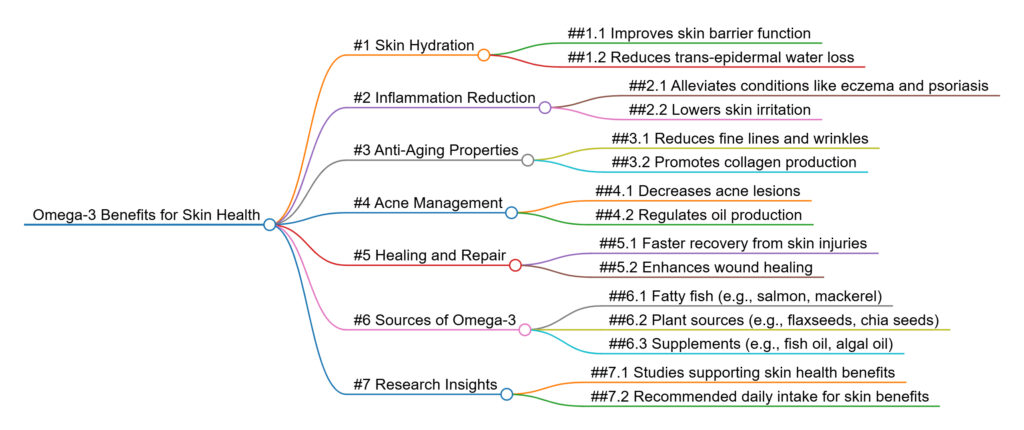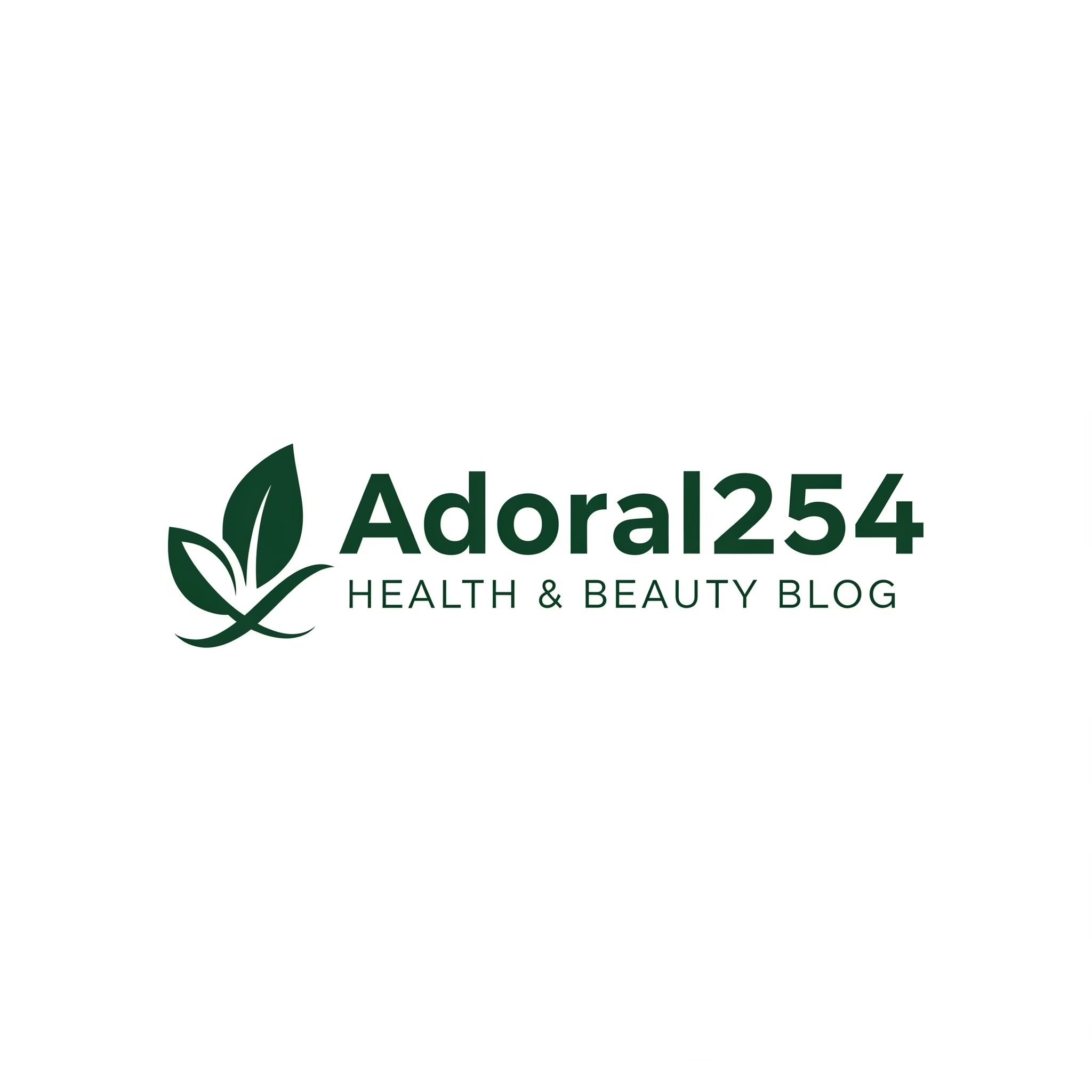Omega-3 fatty acids are essential nutrients that play a vital role in maintaining overall health, including skin health. Found in foods like fatty fish, flaxseeds, walnuts, and chia seeds, omega-3s offer a range of benefits for the skin. This blog explores the science-backed advantages of omega-3s for skin health, supported by tables and illustrations to make it user-friendly.
What Are Omega-3 Fatty Acids?
Omega-3s are polyunsaturated fatty acids (PUFAs) divided into three main types:
EPA (Eicosapentaenoic Acid): Found in fatty fish like salmon and mackerel.
DHA (Docosahexaenoic Acid): Also abundant in fish and seafood.
ALA (Alpha-Linolenic Acid): Found in plant-based sources like flaxseeds and walnuts.
These fatty acids are essential because the body cannot produce them; they must be obtained through diet or supplements13.

Top Benefits of Omega-3s for Skin Health
- Reduces Inflammation
Omega-3s have anti-inflammatory properties that can alleviate skin conditions like psoriasis, eczema, and acne. They work by reducing the production of inflammatory molecules, improving symptoms such as redness, itchiness, and swelling12. - Enhances Skin Hydration
Omega-3s strengthen the skin’s barrier function by improving ceramide production. This helps retain moisture and prevents dryness, making the skin softer and more hydrated510. - Protects Against UV Damage
EPA and DHA increase the skin’s resistance to harmful UV rays by reducing inflammation caused by sun exposure. They also enhance the skin’s ability to repair itself after UV damage57. - Boosts Collagen Production
Omega-3s stimulate collagen synthesis, improving skin elasticity and reducing wrinkles and fine lines. Collagen is essential for maintaining youthful, firm skin710. - Improves Acne
By reducing inflammation and regulating oil production, omega-3s can help manage acne symptoms. Studies show that omega-3 supplementation reduces acne lesions and improves overall skin clarity210. - Soothes Irritated Skin
Omega-3s have a calming effect on irritated or sensitive skin caused by conditions like dermatitis or rosacea. They help reduce scaling, redness, and discomfort511.
Sources of Omega-3 Fatty Acids
Source Type of Omega-3 Benefits for Skin
Fatty Fish (Salmon, Mackerel) EPA & DHA Anti-inflammatory; UV protection
Flaxseeds & Chia Seeds ALA Hydration; supports sensitive skin
Walnuts ALA Improves elasticity; fights dryness
Fish Oil Supplements EPA & DHA Comprehensive skin benefits
How to Incorporate Omega-3s into Your Diet
Eat Fatty Fish: Consume salmon or mackerel at least twice a week.
Use Plant-Based Oils: Add flaxseed or chia seed oil to smoothies or salads.
Snack on Nuts: Include walnuts as a daily snack.
Take Supplements: Use high-quality fish oil or algae-based supplements if dietary intake is insufficient.

A study on atopic dermatitis patients showed reduced dryness and itchiness with omega-3-rich hempseed oil supplementation over 20 weeks2.
Participants taking 4 grams of EPA daily for three months experienced increased resistance to sunburn10.
Women consuming flaxseed oil daily saw a 39% improvement in hydration after 12 weeks10.
Omega-3 fatty acids are a game-changer for achieving healthy, radiant skin. From reducing inflammation to boosting hydration and protecting against UV damage, these essential nutrients offer numerous benefits. Incorporate omega-3-rich foods or supplements into your routine to unlock their full potential for your skin





**mind vault**
mind vault is a premium cognitive support formula created for adults 45+. It’s thoughtfully designed to help maintain clear thinking